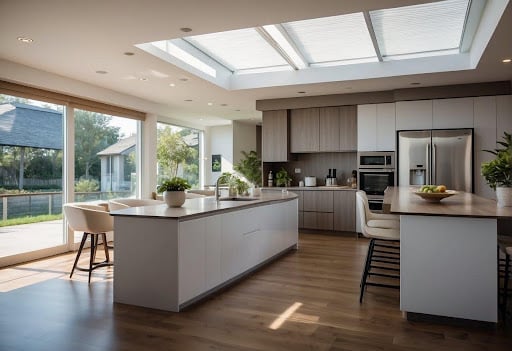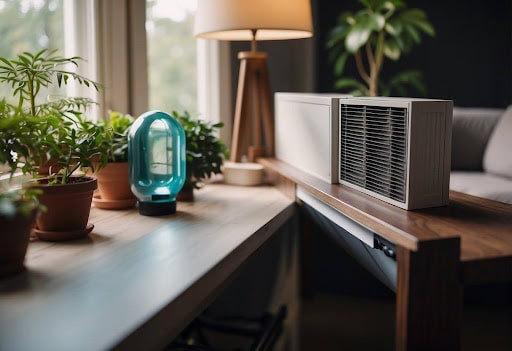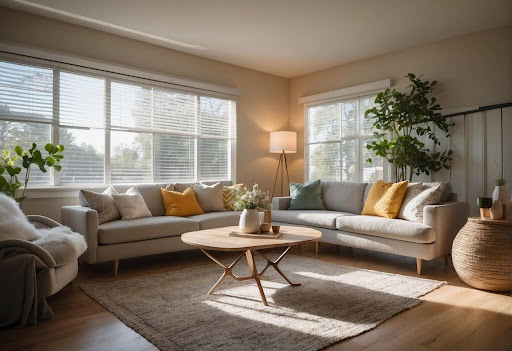Maintaining high indoor air quality is essential for both health and comfort, and high-efficiency pleated filters are a significant line of defense against airborne contaminants in homes. These filters excel at trapping dust, pollen, mold spores, and a multitude of other particulates that can affect air purity. The advanced materials in pleated ac air filter for home are engineered to capture particles as small as bacteria, and sometimes even viruses, offering peace of mind to those concerned about the air they breathe in their living spaces.
The effectiveness of high-efficiency filters is often gauged by their MERV (Minimum Efficiency Reporting Value) rating, which indicates how well the filter can capture larger particles. Those rated MERV 13 or higher fall into the high-efficiency category, making them capable of filtering out finer impurities that lower-rated filters may miss. Unlike standard filters, these pleated varieties increase the surface area for filtration, optimizing air flow and filter lifespan while ensuring superior air quality.
Equipped with materials that echo the protective qualities of a surgical mask, high-efficiency pleated filters not only improve air quality but also enhance the overall performance of heating, ventilation, and air conditioning (HVAC) systems by maintaining cleanliness and reducing energy consumption. Regular replacement of these filters is a straightforward step homeowners can take to ensure that their indoor air is clean, contributing to better respiratory health and a more comfortable home environment.
Understanding High-Efficiency Pleated Filters

High-Efficiency Pleated Filters are a pivotal component in maintaining indoor air quality, known for their high particulate capture rates and their utility in both residential and commercial HVAC systems.
Identifying Types and Materials
High-Efficiency Pleated Filters rely on densely packed pleated media to trap particles such as dust, pollen, and mold. Common materials include synthetic fibers and fiberglass. Some may feature an electrostatic charge to enhance particle capture. Filters like HEPA filters, which achieve at least 99.97% efficiency, fall into this category.
MERV Ratings and Performance Metrics
The efficiency of air filters is assessed by Minimum Efficiency Reporting Value (MERV) on a scale ranging from 1 to 20. High-efficiency pleated filters often have a MERV rating between 14 to 16, signifying their capacity to remove very fine particles. Filtration level is critical for users to understand when choosing a filter for their specific needs.
Size, Fit, and Installation
Proper sizing is essential for air filters to function effectively. Standard sizes can range widely, with thicknesses typically falling between 1 to 6 inches. It’s important to select the right filter size for your HVAC system to ensure a snug fit and avoid air bypass.
Regulatory Standards and Environmental Impact
Institutions like the Environmental Protection Agency (EPA) and the American Society of Heating, Refrigerating, and Air Conditioning Engineers (ASHRAE) have set forth guidelines to standardize filter performance. High-efficiency pleated filters can contribute positively to indoor air quality, with potential benefits for the environment by improving HVAC efficiency.
Comparing Brands and Models
Several brands stand out in the market, including FilterBuy, Nordic Pure, and Filtrete. Products such as the Filtrete MPR 1500 and the Nordic Pure MERV 12 pleated filters are known for their balance of airflow and filtration. Consumers should compare these based on performance, price, and specific attributes like hypoallergenic properties or reusable designs.
Common Misconceptions and Myths
One myth is that all pleated filters restrict airflow, reducing HVAC efficiency. However, advanced materials and design allow for high filtration without significantly impacting airflow. Another misconception is that thicker filters always provide better filtration, which isn’t true if a filter isn’t properly installed or maintained.
Practical Advice for Homeowners

This section equips homeowners with specific guidance on selecting, maintaining, and optimizing high-efficiency pleated filters for enhanced home air quality.
Selection Based on Specific Needs
Choosing the right pleated air filter hinges on understanding one’s home HVAC system requirements and individual air quality needs. Filter Size is crucial, and homeowners should measure their current filter or check their HVAC manual for dimensions like 10x28x1 or 12x12x1. Filtration Efficiency also matters; filters with a Minimum Efficiency Reporting Value (MERV) rating that aligns with the household’s need to manage allergens, pet dander, and other airborne particles are essential.
Maintenance and Replacement Guidelines
For consistent air quality and HVAC efficiency, filters should be inspected monthly and replaced every 90 days, or more often if pets, smokers, or individuals with allergies or asthma are present. A clogged filter not only impedes airflow but also strains the system, potentially leading to increased maintenance or premature breakdown.
Optimizing HVAC Efficiency
Clean, high-efficiency pleated filters contribute to the overall performance of HVAC systems, including furnaces, cooling units, and heat pumps. Properly maintained filters ensure optimal airflow and reduced energy consumption, while neglecting filter replacement can result in a 5-15% increase in energy usage.
Impact on Health and Comfort
A well-chosen air filter significantly diminishes exposure to allergens, bacteria, viruses, and even wildfire smoke, thereby alleviating respiratory issues and contributing to a healthier living environment. Especially for individuals with respiratory conditions such as asthma, selecting a filter with higher MERV ratings can be beneficial in removing smaller particles from the air.
Technology and Innovations in Air Filtration
Advancements in air filter technology, such as Bluetooth-enabled filters and apps, allow homeowners to monitor filter life and receive timely alerts for maintenance. HVAC professionals can offer advice on innovative solutions that work in conjunction with a home’s ductwork and ventilation systems to optimize air purity and system efficiency.

Conclusion
High-Efficiency Pleated Filters represent a significant advancement in maintaining superior indoor air quality in homes. These filters stand out due to their distinguished design and material composition, which together ensure a substantial capture rate of airborne particles, including allergens, dust, and other pollutants.
The benefits of using Pleated Filters include:
- Higher Filtration Efficiency: They are adept at capturing both large and minute particles, enhancing the air purity in the living space.
- Extended Lifespan: Their design often results in a longer service life compared to standard filters, which translates into fewer replacements and reduced maintenance efforts.
- Improved Air Flow: They maintain efficient airflow, which can contribute to the overall energy efficiency of the HVAC system and potentially lower energy costs.
Versatility is another hallmark, with sizes available to fit an array of HVAC systems. Homeowners should consider the width and rating of pleated filters to match their specific needs. A proper fit and appropriate MERV (Minimum Efficiency Reporting Value) rating ensure optimal performance.
Investing in High-Efficiency Pleated Filters is a prudent choice for those prioritizing healthier indoor environments. Their advanced technology not only enhances air quality but also contributes to the longevity and efficiency of heating, ventilation, and air conditioning systems, making them a valuable addition to any home.